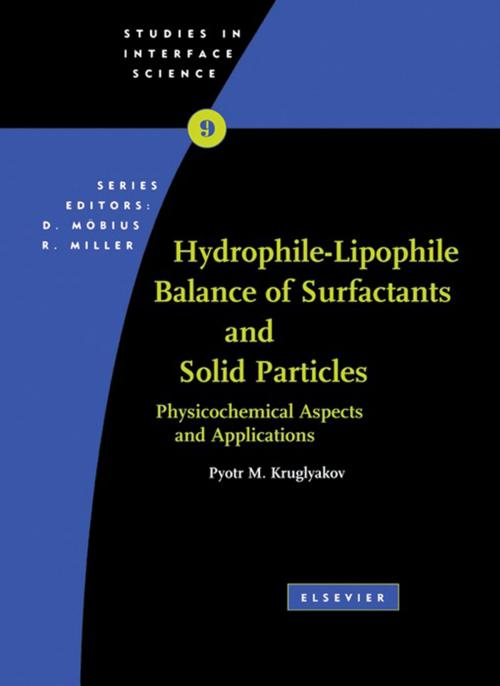Hydrophile - Lipophile Balance of Surfactants and Solid Particles
Physicochemical aspects and applications
Nonfiction, Science & Nature, Science, Chemistry, Physical & Theoretical, Technology, Engineering, Chemical & Biochemical| Author: | P.M. Kruglyakov | ISBN: | 9780080534336 |
| Publisher: | Elsevier Science | Publication: | October 18, 2000 |
| Imprint: | Elsevier Science | Language: | English |
| Author: | P.M. Kruglyakov |
| ISBN: | 9780080534336 |
| Publisher: | Elsevier Science |
| Publication: | October 18, 2000 |
| Imprint: | Elsevier Science |
| Language: | English |
This book considers the different concepts of hydrophile-lipophile balance (HLB) of surfactants and solid particles and the main physicochemical properties of surfactant and solid interfaces which are used to definite the hydrophile-lipophile balance. The book comprehensively analyses all interfacial and bulk properties of surfactants used for the determination of HLB (such as interfacial tension, distribution coefficient, adsorption, surface pressure, surfactants solubility, structure characteristics, distribution between heteropolar phases, micellar formation, chromatographic characteristics, phase separation in emulsions, phase inversion temperature, formation of three phase systems).
The central point of the book is the energetic interpretation of the balance, i.e. the hydrophile-lipophile ratio. At the same time the HLB-number systems of Griffin and Davies and other independant methods of the hydrophile-lipophile balance definitions are discussed: PIT, polarity indexes, surfactant affinity difference etc. The possibility of application of the different characteristics of the hydrophile-lipophile balance as a criterion of phase inversion in emulsions and microemulsion systems water-oil-surfactant are considered.
For the first time the different methods of the hydrophile-lilophile balance definition for solid particles in compact and dispersed form are suggested by the author. The use of hydrophile-lipophile characteristics of solid particles as a criterion of phase inversion in emulsion stabilisation and for other applications is discussed.
This book considers the different concepts of hydrophile-lipophile balance (HLB) of surfactants and solid particles and the main physicochemical properties of surfactant and solid interfaces which are used to definite the hydrophile-lipophile balance. The book comprehensively analyses all interfacial and bulk properties of surfactants used for the determination of HLB (such as interfacial tension, distribution coefficient, adsorption, surface pressure, surfactants solubility, structure characteristics, distribution between heteropolar phases, micellar formation, chromatographic characteristics, phase separation in emulsions, phase inversion temperature, formation of three phase systems).
The central point of the book is the energetic interpretation of the balance, i.e. the hydrophile-lipophile ratio. At the same time the HLB-number systems of Griffin and Davies and other independant methods of the hydrophile-lipophile balance definitions are discussed: PIT, polarity indexes, surfactant affinity difference etc. The possibility of application of the different characteristics of the hydrophile-lipophile balance as a criterion of phase inversion in emulsions and microemulsion systems water-oil-surfactant are considered.
For the first time the different methods of the hydrophile-lilophile balance definition for solid particles in compact and dispersed form are suggested by the author. The use of hydrophile-lipophile characteristics of solid particles as a criterion of phase inversion in emulsion stabilisation and for other applications is discussed.















